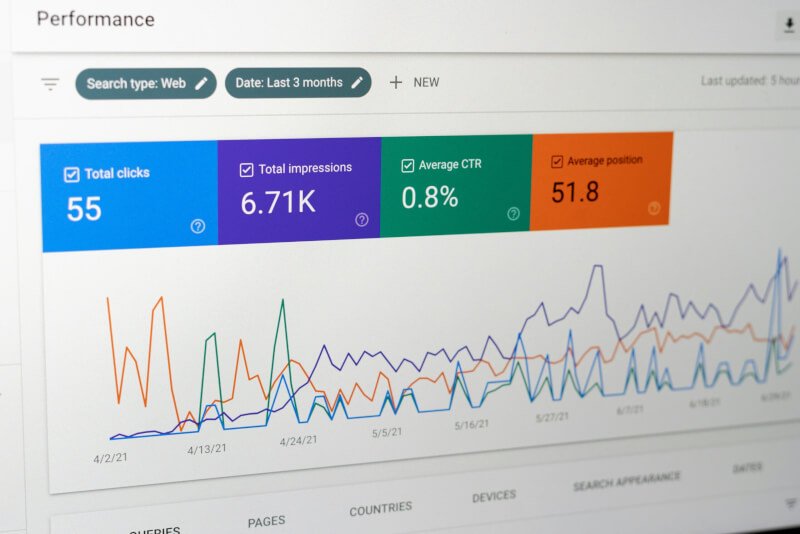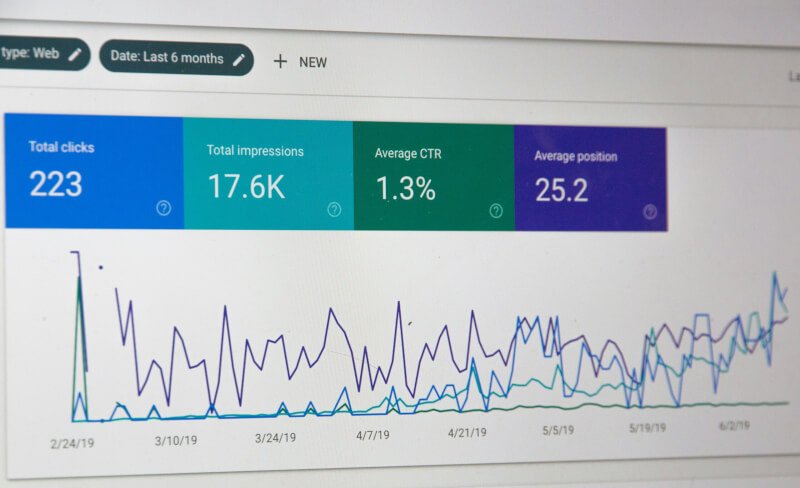If you’ve ever wondered just how effective your online advertisements are, you’ve probably come across the term “click-through rates.” Click-through rates, often referred to as CTR, are an essential metric used in digital marketing to measure the success of an ad campaign. Put simply, CTR indicates the percentage of users who clicked on an ad to visit a website or landing page. In this article, we will explore the significance of click-through rates and how they can help you optimize your advertising strategy for better engagement and conversions. So, let’s dive into the world of click-through rates and uncover the hidden potential they hold for your business!

Definition of Click-through Rates
What are click-through rates?
Click-through rates (CTRs) are a metric used in digital advertising to measure the effectiveness of an ad campaign. CTR is calculated by dividing the number of clicks on an ad by the number of impressions it received, and expressing it as a percentage. Essentially, CTR reflects the proportion of people who saw an ad and clicked on it, indicating their interest and engagement with the ad content.
Importance of click-through rates
Click-through rates hold immense significance in the realm of online advertising. They provide insights into how well an ad resonates with the target audience and how effectively it attracts user attention. High CTRs indicate that the ad message is persuasive and relevant, leading to increased website traffic, brand exposure, and potential conversions. On the other hand, low CTRs may indicate issues with ad copy, targeting, or design that need to be addressed to improve campaign performance.
How click-through rates are measured
Measuring click-through rates entails tracking the number of clicks an ad receives and dividing it by the number of impressions it generates. Impressions refer to the number of times the ad is displayed to users. This information is typically obtained from advertising platforms or analytics tools. CTR is calculated by dividing the number of clicks by the number of impressions and multiplying the result by 100 to get the percentage. For example, if an ad receives 100 clicks and 10,000 impressions, the CTR would be 1%.
Factors Affecting Click-through Rates
Quality of ad copy
The quality of the ad copy plays a critical role in influencing click-through rates. Well-crafted ad copy that effectively communicates the value proposition, offers compelling incentives, and uses persuasive language is more likely to capture the attention of users and entice them to click. It is essential to focus on clarity, relevance, and concise messaging to create ad copy that resonates with the target audience and motivates them to take action.
Relevance of landing page
The relevance of the landing page is another crucial factor that impacts click-through rates. After clicking on an ad, users expect to be directed to a landing page that aligns with their expectations and provides the promised information or offer. If the landing page fails to meet these expectations or lacks relevance to the ad, users are more likely to abandon the page without taking further action. Ensuring a seamless and consistent user experience from ad to landing page is vital to improving click-through rates.
Position of ad on the page
The position of an ad on a webpage can significantly influence click-through rates. Generally, ads placed at the top of the page or above the fold tend to receive higher visibility and, therefore, have a greater chance of being clicked on. Users often have a limited attention span and are more likely to engage with ads that are immediately visible without the need for scrolling. Ad placement strategy should consider the prime real estate on a webpage to maximize click-through rates.
Ad targeting
Effective ad targeting is essential for optimizing click-through rates. When ads are displayed to a highly targeted audience, comprising individuals who are most likely to be interested in the product or service being advertised, the likelihood of click-throughs increases. Various targeting options, such as demographics, interests, behavior, location, and device, can be leveraged to ensure that ads are shown to the most relevant audience, thereby increasing the chances of engagement and click-throughs.
Ad format and design
The format and design of an ad significantly impact click-through rates. Attention-grabbing visuals, compelling ad formats, and aesthetically pleasing design elements can greatly enhance the appeal of an ad and attract user attention. Elements such as vibrant colors, clear call-to-action buttons, and visually appealing imagery can make ads more enticing and drive click-throughs. It is crucial to strike a balance between attractive design and informative content to create ads that effectively engage and motivate users to take action.
How to Improve Click-through Rates
Optimize targeting
Improving click-through rates can be achieved through optimal targeting strategies. Understanding the target audience’s demographics, interests, and preferences enables advertisers to tailor their ads to resonate with the intended audience. By narrowing down the target audience and refining targeting parameters, advertisers can ensure that their ads are shown to individuals who are most likely to engage with the content and click through.
Create compelling ad copy
Crafting compelling ad copy is a fundamental aspect of improving click-through rates. The ad copy should be concise, informative, and compelling, focusing on the unique selling points of the product or service. Utilizing persuasive language, emphasizing key benefits, and highlighting incentives or promotions can make the ad more enticing to users. A strong call-to-action should also be included to encourage users to click through.
Use eye-catching visuals
Visual elements play a crucial role in capturing user attention and driving click-through rates. Utilizing eye-catching visuals, such as high-quality images or engaging videos, can help ads stand out from the competition and entice users to click. Including visuals that are directly related to the product or service being advertised and evoke emotion can significantly enhance the effectiveness of the ad in generating click-throughs.
Utilize ad extensions
Ad extensions provide additional information and functionality to ads, improving their visibility and click-through rates. Extensions such as sitelinks, callouts, and structured snippets allow advertisers to include extra details or links in their ads, providing users with more reasons to click through. By utilizing relevant ad extensions that enhance the user experience and highlight unique selling points, advertisers can increase the likelihood of click-throughs.
Understand audience intent
Understanding the intent of the target audience is crucial for improving click-through rates. By analyzing search queries, browsing behavior, and purchase patterns, advertisers can gain insights into what users are looking for and tailor their ad messaging accordingly. Matching the user’s intent with relevant ad content increases the chances of capturing their interest and driving click-throughs.
The Role of Click-through Rates in Ad Campaigns
Measuring campaign effectiveness
Click-through rates serve as a valuable metric for measuring the effectiveness of an ad campaign. They provide insights into how well the ads are resonating with the target audience and whether they are generating sufficient interest and engagement. High click-through rates indicate successful ad campaigns that are effectively capturing user attention and motivating them to take action.
Determining ad placement and pricing
Click-through rates play a significant role in determining ad placement and pricing. Advertisers often bid for ad placements based on the expected click-through rates. Higher click-through rates indicate a higher level of user engagement and desirability of the ad placement, which can influence the bidding process. Additionally, click-through rates can help determine the effectiveness of different ad placements and assist in optimizing the allocation of advertising budgets.
Maximizing return on advertising investment
Click-through rates contribute to maximizing return on advertising investment (ROI). Ads with higher click-through rates generate more traffic and potential conversions, increasing the chances of a positive ROI. By continuously monitoring and improving click-through rates, advertisers can ensure that their ad campaigns are efficient and delivering optimal results, thus maximizing the return on their advertising investment.
Identifying underperforming ads
Click-through rates help identify underperforming ads that are not generating enough clicks or engagement. Low click-through rates may indicate issues with ad copy, design, targeting, or relevance. By closely monitoring click-through rates, advertisers can identify the underperforming ads and make necessary adjustments to improve their performance. This iterative process allows for continuous optimization and ensures that resources are focused on the most effective ads.
Testing and optimizing ad elements
Click-through rates enable advertisers to test and optimize different ad elements. By comparing click-through rates for ads with variations in copy, visuals, targeting, or design, advertisers can identify which elements are resonating best with their target audience. This data-driven iterative approach enables advertisers to refine their ads, focusing on what works best in terms of generating click-throughs and maximizing campaign performance.

Industry Benchmarks for Click-through Rates
Average click-through rates by industry
Click-through rates can vary significantly across industries. Factors such as the nature of the product or service, target audience demographics, and industry norms influence the expected click-through rates. For instance, industries associated with high demand and competition, such as technology or fashion, may see lower average click-through rates compared to niche industries with a more targeted audience. It is important for advertisers to research industry benchmarks to understand where their click-through rates stand relative to their competitors.
Comparison with previous benchmarks
Tracking click-through rates over time and comparing them with previous benchmarks is essential for measuring progress and identifying trends. By analyzing changes in click-through rates, advertisers can evaluate the impact of optimizations or changes made to their ads or targeting strategies. If click-through rates show improvement compared to previous benchmarks, it indicates that the ad campaigns are becoming more effective.
Factors influencing industry benchmarks
Several factors influence industry benchmarks for click-through rates. These include the level of competition within the industry, the level of innovation or novelty in the product or service, the advertising platforms used, and the target audience’s behavior and preferences. Understanding these factors and how they influence benchmarks can provide valuable insights for advertisers and assist in setting realistic expectations and goals.
Click-through Rates in Different Advertising Channels
Search engine advertising
Click-through rates in search engine advertising are typically higher compared to other channels due to the high level of intent exhibited by users actively searching for information or solutions. Users are more likely to click on search ads that closely match their search query and satisfy their information needs. Optimizing keywords, ad relevance, and targeting in search engine advertising campaigns is crucial to achieving higher click-through rates.
Social media advertising
Click-through rates in social media advertising can vary depending on the platform and targeting strategies employed. The inherently social nature of these platforms can provide opportunities for ads to blend seamlessly with user-generated content and result in higher engagement. Effective targeting based on demographics, interests, and behaviors can significantly improve click-through rates in social media advertising.
Display/banner advertising
Click-through rates in display/banner advertising tend to be lower compared to other channels due to their visual prominence and potential ad fatigue. Users may develop banner blindness or become desensitized to display ads due to their prevalence. However, deploying eye-catching visuals, compelling ad formats, and strategic ad placement can help improve click-through rates in display/banner advertising.
Email marketing
Click-through rates in email marketing are influenced by factors such as the quality of the email content, relevance to the recipient, and effective call-to-action. Personalized and targeted email campaigns that offer valuable incentives or promotions can significantly enhance click-through rates. Additionally, optimizing email design, subject lines, and preview text can entice recipients to click on the emails.
Video advertising
Click-through rates in video advertising vary depending on the platform, video content, and ad format. Engaging and relevant video content that captures users’ attention and communicates the intended message effectively can lead to higher click-through rates. Leveraging interactive elements within video ads, such as clickable overlays or end screens, can also increase the chances of users engaging with the ad and clicking through.

Click-through Rates vs Conversion Rates
Understanding the difference
Click-through rates and conversion rates are both valuable metrics in measuring the success of ad campaigns, but they represent different stages in the user journey. Click-through rates measure the proportion of users who clicked on an ad in relation to the number of impressions it received. Conversion rates, on the other hand, measure the percentage of users who take a specific desired action, such as making a purchase or filling out a form, after clicking on an ad.
Measuring success with both metrics
Both click-through rates and conversion rates contribute to assessing the success of an ad campaign. While click-through rates reflect user engagement and interest in the ad, conversion rates provide insights into the effectiveness of the ad in driving desired actions. By analyzing both metrics, advertisers can gain a comprehensive understanding of the user journey from ad interaction to conversion, allowing for meaningful optimization to improve campaign performance.
Optimizing for click-through rates and conversions
Optimizing for click-through rates involves focusing on ad elements that are likely to capture users’ attention and motivate them to click. This includes crafting compelling ad copy, utilizing eye-catching visuals, and optimizing targeting strategies to reach the most relevant audience. Optimizing for conversion rates involves ensuring a seamless user experience from ad to landing page, implementing persuasive calls-to-action, and addressing any potential barriers or friction points that might hinder conversion.
Case Studies and Success Stories
Examples of high click-through rates
Case studies and success stories that highlight campaigns with high click-through rates can provide valuable insights and inspiration for advertisers. These examples demonstrate effective strategies and tactics employed to achieve exceptional click-through rates. Successful campaigns often involve a combination of compelling ad copy, eye-catching visuals, precise targeting, and optimization based on data-driven insights.
Strategies used to achieve success
Numerous strategies have been used to achieve success in improving click-through rates. These strategies include leveraging data analytics to understand audience behavior and preferences, A/B testing different variations of ads, implementing personalized targeting, utilizing dynamic content, and optimizing ad formats and design to enhance user engagement. Case studies and success stories shed light on these strategies and provide actionable tips for advertisers looking to improve click-through rates.
Impact of improved click-through rates
Improved click-through rates can have a significant impact on the success of an ad campaign. Higher click-through rates lead to increased website traffic, enhanced brand exposure, and greater opportunities for potential conversions. By maximizing click-through rates, advertisers can increase the visibility and effectiveness of their campaigns, ultimately driving better results and return on investment.

Common Mistakes in Click-through Rate Optimization
Overloading ads with information
One common mistake in click-through rate optimization is overloading ads with excessive information. Ads should be concise, visually appealing, and easy to understand. When ads are cluttered with too much text or overwhelming visuals, they can deter users from clicking. It is important to strike a balance between presenting essential information and maintaining an aesthetically pleasing design to improve click-through rates.
Not tracking and analyzing data
Failing to track and analyze click-through rate data is another common mistake. Without gathering data on the performance of ads, it becomes challenging to identify areas for improvement. By actively tracking data, advertisers can gain valuable insights into the effectiveness of their campaigns and make data-driven decisions to optimize click-through rates.
Ignoring mobile optimization
As mobile usage continues to rise, ignoring mobile optimization can prove detrimental to click-through rates. Ads that are not optimized for mobile devices may appear distorted or fail to load correctly, resulting in a poor user experience and lower click-through rates. Advertisers should ensure that their ads are responsive and compatible with various screen sizes to maximize click-through rates among mobile users.
Using irrelevant or misleading ad copy
Using irrelevant or misleading ad copy is a mistake that can significantly impact click-through rates. Ad copy should accurately represent the content or offer on the landing page to set clear expectations for users. When ads fail to deliver upon their promises or mislead users, trust is undermined, resulting in lower click-through rates. Advertisers must ensure that their ad copy aligns with the landing page content to foster a positive user experience and drive click-throughs.
Failing to test and iterate
A common mistake in click-through rate optimization is the failure to test and iterate on ad elements. Advertisers who do not engage in continuous testing and optimization miss out on opportunities to improve click-through rates. By conducting A/B tests on different ad variations, adjusting targeting strategies, and analyzing performance data, advertisers can identify what works best for their campaigns and make the necessary adjustments to drive higher click-through rates.
The Future of Click-through Rates
Emerging advertising technologies
The future of click-through rates is intertwined with emerging advertising technologies. Advances in artificial intelligence (AI), machine learning, and automation are transforming the advertising landscape. These technologies offer opportunities for improved targeting, personalization, and ad optimization. Advertisers can leverage AI-based algorithms to deliver highly relevant ads to the right audience at the right time, potentially increasing click-through rates.
Personalization and targeted advertising
Personalization and targeted advertising will continue to play a crucial role in improving click-through rates. By leveraging data analytics and user insights, advertisers can create tailored ad experiences that resonate with individual users. Personalization techniques such as dynamic content, geotargeting, and behavior-based targeting can enhance relevancy and improve click-through rates by delivering ads that align with the specific preferences and needs of each user.
Impact of changing consumer behavior
Understanding and adapting to changing consumer behavior is vital for the future of click-through rates. As technology evolves, consumers are becoming more ad-savvy, demanding higher relevance and engaging experiences. Advertisers must stay abreast of consumer preferences and behavior patterns to create ads that effectively capture attention and drive click-throughs. Additionally, staying attuned to emerging consumer trends, such as the rise of mobile usage or increasing interest in sustainability, can inform strategies to enhance click-through rates.
Role of AI in optimizing click-through rates
Artificial intelligence will continue to play a significant role in optimizing click-through rates. AI-powered algorithms can process vast amounts of data, identify patterns, and make data-driven decisions to optimize ads and targeting strategies. By leveraging AI, advertisers can automate the process of identifying high-performing ad elements, adjusting bids, and targeting parameters in real-time to improve click-through rates. Additionally, AI can provide actionable insights and predictive analytics, enabling advertisers to continuously optimize their campaigns for maximum click-through rates.
In conclusion, click-through rates are a crucial metric in digital advertising that measure the effectiveness of ad campaigns. Factors such as the quality of ad copy, relevance of landing pages, ad positioning, targeting, and ad format and design influence click-through rates. Improving click-through rates requires optimizing targeting, creating compelling ad copy, utilizing eye-catching visuals, utilizing ad extensions, and understanding audience intent. Click-through rates play a vital role in measuring campaign effectiveness, determining ad placement and pricing, maximizing return on advertising investment, identifying underperforming ads, and testing and optimizing ad elements. Benchmarks for click-through rates vary by industry and are influenced by factors such as competition and target audience behavior. Click-through rates differ across advertising channels such as search engine advertising, social media advertising, display/banner advertising, email marketing, and video advertising. Click-through rates and conversion rates are both important metrics, with click-through rates indicating engagement and conversion rates measuring desired actions. Optimizing click-through rates involves avoiding common mistakes such as overloading ads, not tracking data, ignoring mobile optimization, using irrelevant or misleading ad copy, and failing to test and iterate. The future of click-through rates lies in emerging advertising technologies, personalization, adapting to changing consumer behavior, and leveraging AI for optimization.



